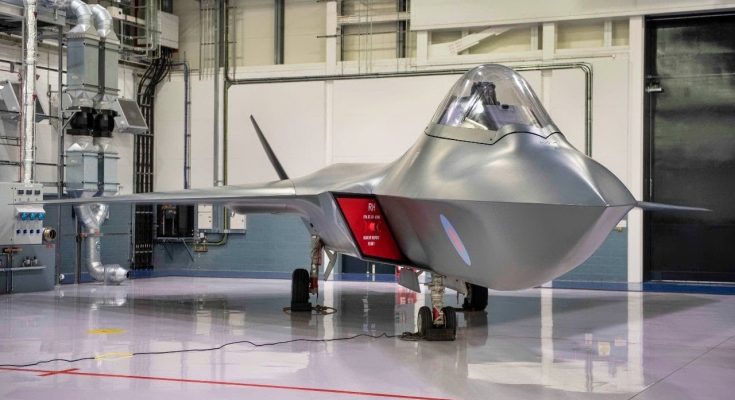UK Tempest 6th Generation Fighter Jet: Shocking the U.S. & the World!
The United Kingdom’s Tempest fighter jet program is one of the most exciting and ambitious projects in modern aerospace technology. With the goal of developing a 6th-generation aircraft, Tempest is designed to revolutionize aerial combat in ways that could surprise not only its allies but also its primary competitors, including the United States. The project, led by BAE Systems with participation from Rolls-Royce, Leonardo, and MBDA, promises to redefine air superiority and disrupt conventional thinking about the future of combat aviation.
A Leap Beyond 5th-Generation Technology
While the F-22 Raptor, F-35 Lightning II, and Russia’s Su-57 are examples of 5th-generation fighters, the Tempest aims to leap past these models, representing a shift into the 6th generation of fighter aircraft. The UK’s Ministry of Defence has outlined that the Tempest will include cutting-edge technologies such as advanced stealth features, enhanced sensor fusion, unmanned capabilities, artificial intelligence, and a degree of autonomy that makes it fundamentally different from anything currently in operation.
The Tempest’s stealth design will likely go beyond the “invisible” capabilities of current fighters, including advanced radar-absorbing materials and integrated electronic warfare systems that can jam and confuse enemy radar. Unlike current fighters, Tempest may be designed to work seamlessly with other platforms—drones, satellites, and even autonomous ground vehicles—forming a connected network of systems that dominate the battlefield in a way not yet seen.
Unmanned and Manned Capabilities
One of the most groundbreaking aspects of the Tempest is its potential to operate both as a manned and unmanned aircraft, offering unparalleled flexibility. In high-risk situations, the Tempest could be flown autonomously or piloted remotely, reducing the risk to human lives. However, when needed, the aircraft can be piloted in the traditional manner, combining the best of both worlds.
The development of unmanned fighter jets is a step into uncharted territory, and the Tempest’s design reflects a future where air combat may involve not just pilots but also entire fleets of networked systems working in concert. The ability to launch and control multiple drones simultaneously could alter the dynamics of aerial warfare, creating a “swarm” effect that overwhelms enemy defenses.
Advanced Artificial Intelligence (AI) Integration
AI is expected to play a central role in the Tempest, aiding in decision-making, strategic planning, and operational efficiency. The AI would assist in navigating complex combat environments, analyzing data, and adjusting tactics in real-time based on battlefield conditions. Additionally, Tempest could possess autonomous decision-making capabilities, allowing it to function with minimal human intervention. This integration of AI could make the Tempest far more efficient in combat scenarios, particularly in dynamic, fast-moving conflicts where human decision-making may be too slow to react.
The Shock to the U.S. and the Global Defense Landscape
The Tempest has the potential to shock not just the U.S. but also global military powers by breaking traditional paradigms of fighter aircraft design. For years, the U.S. has dominated the fighter jet industry with its F-22 and F-35, with little competition from Europe. However, with the Tempest, the UK aims to challenge the status quo, offering a solution that could outpace current American designs in terms of speed, versatility, and technological sophistication.
This shift in the UK’s defense capabilities may prompt the U.S. to accelerate its own 6th-generation fighter programs, such as the Next-Generation Air Dominance (NGAD) initiative, which the U.S. Air Force is developing. The Tempest’s focus on autonomous systems, AI, and flexible manned-unmanned operations could push the global defense community to rethink how future aerial combat will unfold.
Collaborative International Influence
Another aspect that makes the Tempest extraordinary is its international cooperation. The UK has partnered with Italy and Sweden in the development of the Tempest, creating a formidable European air combat solution. This collaborative effort may allow the Tempest to have a broader global impact, providing a counterpoint to the U.S.-dominated market and shifting the balance of power in fighter jet technology.
In addition, while the Tempest is still in development, it could significantly impact NATO’s defense strategy. If the Tempest meets its ambitious goals, it could influence military doctrine, procurement decisions, and even the relationship between NATO members and traditional partners like the U.S.
Conclusion
The UK Tempest 6th-generation fighter jet is a game-changer, set to disrupt not only the U.S. defense industry but the entire global military landscape. With advancements in AI, unmanned capabilities, and next-generation stealth, the Tempest is poised to lead the way in the future of air combat. As nations around the world witness the rapid development of this aircraft, it is clear that Tempest will be more than just a military tool—it will be a symbol of technological innovation, international cooperation, and a new era of warfare.



